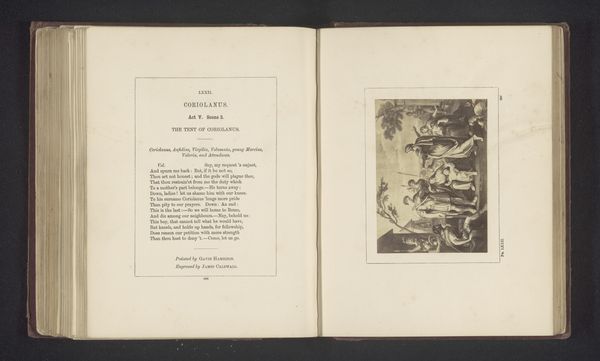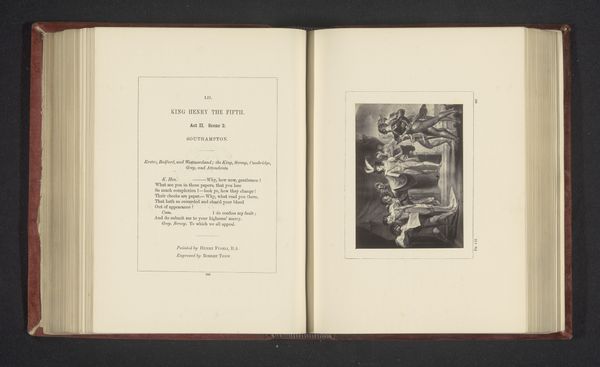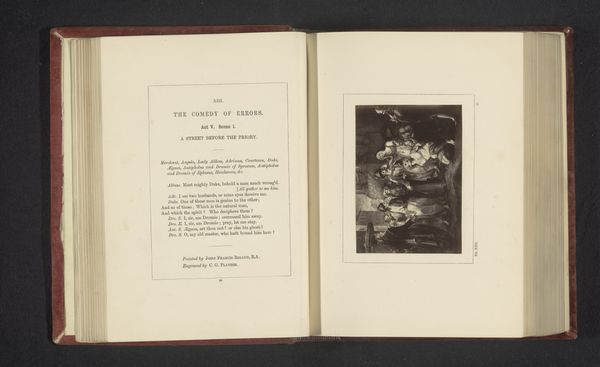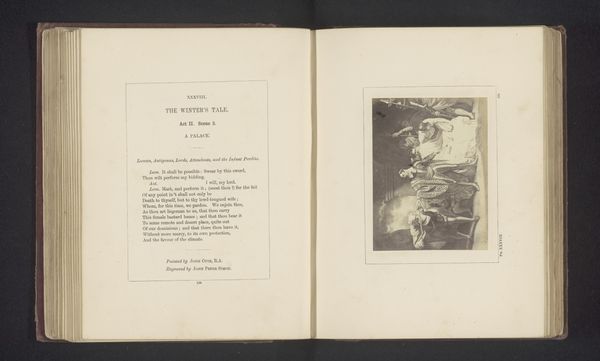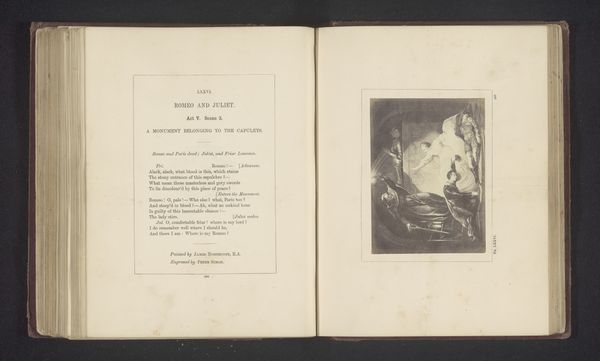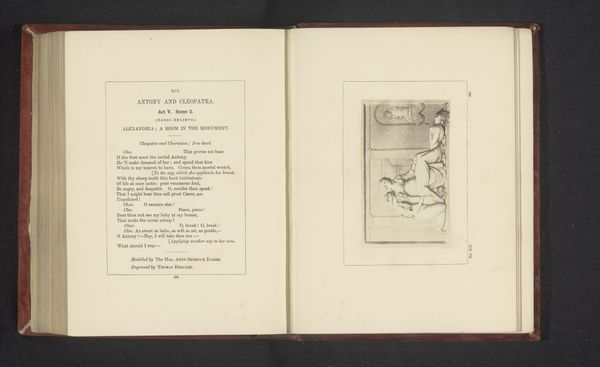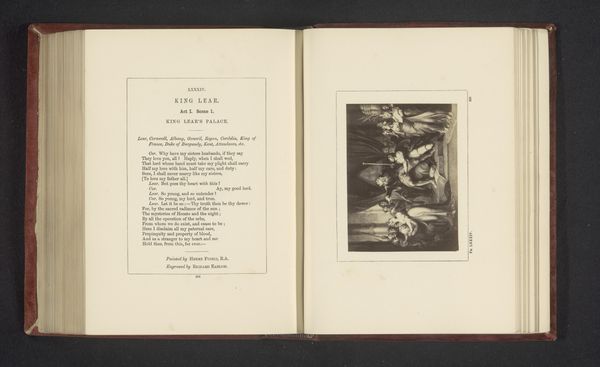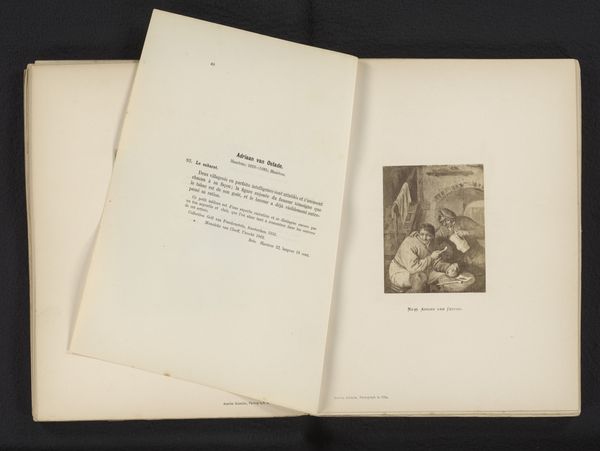
Fotoreproductie van een prent naar een schilderij door Benjamin West, voorstellend een scene uit Hamlet door William Shakespeare before 1867
0:00
0:00
print, photography, engraving
#
script typeface
#
aged paper
#
narrative-art
# print
#
hand drawn type
#
photography
#
personal sketchbook
#
hand-drawn typeface
#
fading type
#
thick font
#
history-painting
#
handwritten font
#
engraving
#
historical font
#
small font
Dimensions: height 75 mm, width 100 mm
Copyright: Rijks Museum: Open Domain
Curator: Here we have a photographic reproduction of a print, originating from a painting by Benjamin West. The work depicts a scene from Shakespeare's Hamlet and was produced before 1867. Editor: It's strikingly stark. The image is quite faded, with lots of contrast—a tableau vivant emerging from the shadows. I’m curious, what sort of printmaking technique do you think generated that image? Curator: The print was engraved by Francis Legat after West's painting, a very popular method for disseminating history paintings, especially Shakespearean scenes, throughout the 19th century. This photo simply reproduces it. It democratized art, making it accessible beyond wealthy patrons. Editor: It certainly has a manufactured feel, in a good way. I imagine the layers of production impacting the final texture. We see the artist, then the engraver interpreting his design for reproduction and a photographer re-recording a print from the late hand-engraving era… so many material processes! Curator: Indeed. And West's paintings were, in their own way, a manufactured form. He intentionally aimed for grand, dramatic compositions, fulfilling a need in British society for historical narratives on a large scale. Editor: This focus brings out something really intriguing to me. Think about how the engraver interprets paint strokes—a free gesture in paint becomes regulated line work and hatching; that regulated handwork translates again, into a flat photograph on fragile, aged paper. What a cascade of labour to reach our eyes! Curator: It raises compelling questions about originality and value, doesn't it? What constitutes the 'real' artwork? Is it West's painting, Legat’s engraving, or this photograph? Each plays a role in the dissemination of Hamlet's story. The narrative, carefully rendered, has value irrespective of the production technique. Editor: For me, the narrative exists through production! You can see the way meaning changes as materials evolve and as their associated value morphs—this affects who gets to see or experience a cultural monument. Curator: Ultimately, what we're examining here is how powerful cultural forces intertwine to shape public understanding and interaction with canonical stories like Hamlet, across eras and media. Editor: Right. Every version shapes not just who *sees* but also who *makes*, and under what material conditions—something to remember every time we engage with history.
Comments
No comments
Be the first to comment and join the conversation on the ultimate creative platform.
